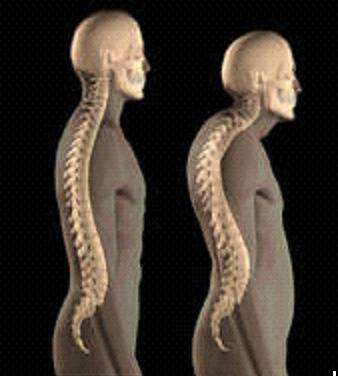Kyphosis Symptoms, Causes, Diagnosis and Treatment

What Is Kyphosis?
Spine has several curves in its structure. These curves provide support to people by absorbing the loads that spine has to bear due to the body weight. When these curves bend forward abnormally, the condition is known as kyphosis. Although slight bending of the spine is common but when the bend in significant, it is termed as kyphosis. Despite the fact that kyphosis is common in older people, it can occur at any age. Infants and young adults usually suffer from kyphosis if their spine is malformed.
What Are The Symptoms Of Kyphosis?
The only major symptom of kyphosis is a significantly round back. However, the following symptoms may evolve in some cases:
- Weariness.
- Stiffness in spine.
- Back pain.
In very severe cases, victims may suffer from difficulty in breathing.
What Causes Kyphosis?
Vertebrae makes up the spine and kyphosis occurs when vertebrae becomes wedge-shaped. This transformation of shape could be caused due to the following factors:
- Spinal column not being developed properly in the womb.
- Osteoporosis which is common in old people, especially women. Moreover, people who consume too much of corticosteroids tend to suffer from kyphosis.
- Disk degeneration.
- Spinal cancer that weakens the vertebrae.
- Underlying syndromes such as Prader-Willi disease and Marfan syndrome.
- Scheuermann’s kyphosis that generally occurs before puberty in boys.
In teenagers, a problem of postural kyphosis usually occurs. In this type of kyphosis, the upper spine becomes curved due to slouching.
What Are The Complications Of Kyphosis?
The following complications may arise in kyphosis:
- Severe and, at times, disabling back pain.
- Compression of abdomen leading to poor appetite.
- Poor body image.
How Is Kyphosis Diagnosed?
Depending on the severity of kyphosis and evolving symptoms, one or more of the following may be required to diagnose kyphosis properly:
- Physical exam in which doctors will observe the spine while asking the victim to stand straight.
- Neurological exam.
- Computerized tomography or CT scan.
- X-rays.
- Magnetic resonance imaging or MRI.
- Nerve tests to evaluate how well nerve impulses travel between extremities and spinal cord.
Not all the above mentioned tests and exams are required to diagnose kyphosis. If the condition is not very serious, a single test may make kyphosis clear.
How Is Kyphosis Treated?
Since kyphosis can have several causes, the treatment is different for each type. Before suggesting an appropriate treatment, doctors will observe the cause and symptoms. The following treatments, however, are generally recommended:
- Over-the-counter or prescribed pain relievers.
- Osteoporosis medicines can help strengthening the bones and prevent kyphosis from worsening.
- Bracing in case of Scheuermann’s disease.
- Having a healthy diet with regular physical exercises.
- Stretching exercises.
- Exercises that makes abdomen stronger.
- Sufficient consumption of vitamin D and calcium.
- Surgery in case of very severe kyphosis. A procedure known as spinal fusion has successfully treated several kyphosis cases.
A proper treatment may prevent any complications from arising.
By : Natural Health News




